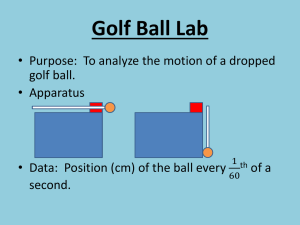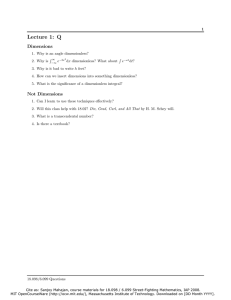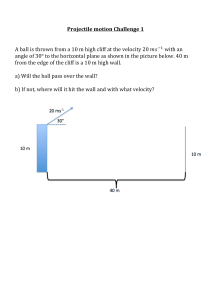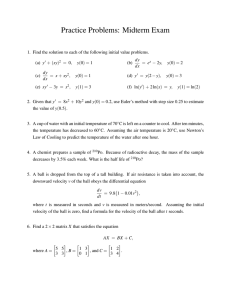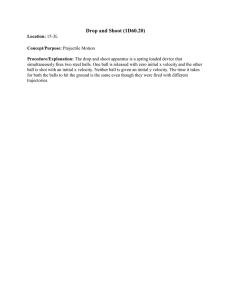Non-Dimensionalization, Modelling, Similitude, Stream and Potential Function
advertisement
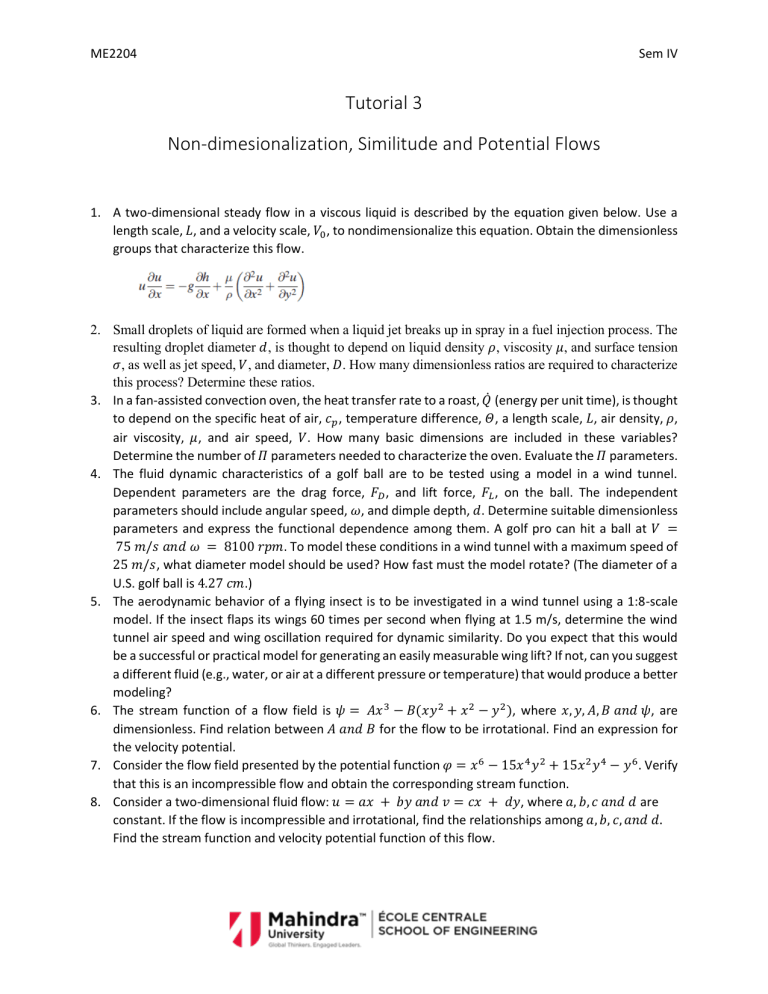
ME2204 Sem IV Tutorial 3 Non-dimesionalization, Similitude and Potential Flows 1. A two-dimensional steady flow in a viscous liquid is described by the equation given below. Use a length scale, 𝐿, and a velocity scale, 𝑉0 , to nondimensionalize this equation. Obtain the dimensionless groups that characterize this flow. 2. Small droplets of liquid are formed when a liquid jet breaks up in spray in a fuel injection process. The resulting droplet diameter 𝑑, is thought to depend on liquid density 𝜌, viscosity 𝜇, and surface tension 𝜎, as well as jet speed, 𝑉, and diameter, 𝐷. How many dimensionless ratios are required to characterize this process? Determine these ratios. 3. In a fan-assisted convection oven, the heat transfer rate to a roast, 𝑄̇ (energy per unit time), is thought to depend on the specific heat of air, 𝑐𝑝 , temperature difference, 𝛩, a length scale, 𝐿, air density, 𝜌, air viscosity, 𝜇, and air speed, 𝑉. How many basic dimensions are included in these variables? Determine the number of 𝛱 parameters needed to characterize the oven. Evaluate the 𝛱 parameters. 4. The fluid dynamic characteristics of a golf ball are to be tested using a model in a wind tunnel. Dependent parameters are the drag force, 𝐹𝐷 , and lift force, 𝐹𝐿 , on the ball. The independent parameters should include angular speed, 𝜔, and dimple depth, 𝑑. Determine suitable dimensionless parameters and express the functional dependence among them. A golf pro can hit a ball at 𝑉 = 75 𝑚/𝑠 𝑎𝑛𝑑 𝜔 = 8100 𝑟𝑝𝑚. To model these conditions in a wind tunnel with a maximum speed of 25 𝑚/𝑠, what diameter model should be used? How fast must the model rotate? (The diameter of a U.S. golf ball is 4.27 𝑐𝑚.) 5. The aerodynamic behavior of a flying insect is to be investigated in a wind tunnel using a 1:8-scale model. If the insect flaps its wings 60 times per second when flying at 1.5 m/s, determine the wind tunnel air speed and wing oscillation required for dynamic similarity. Do you expect that this would be a successful or practical model for generating an easily measurable wing lift? If not, can you suggest a different fluid (e.g., water, or air at a different pressure or temperature) that would produce a better modeling? 6. The stream function of a flow field is 𝜓 = 𝐴𝑥 3 − 𝐵(𝑥𝑦 2 + 𝑥 2 − 𝑦 2 ), where 𝑥, 𝑦, 𝐴, 𝐵 𝑎𝑛𝑑 𝜓, are dimensionless. Find relation between 𝐴 𝑎𝑛𝑑 𝐵 for the flow to be irrotational. Find an expression for the velocity potential. 7. Consider the flow field presented by the potential function 𝜑 = 𝑥 6 − 15𝑥 4 𝑦 2 + 15𝑥 2 𝑦 4 − 𝑦 6 . Verify that this is an incompressible flow and obtain the corresponding stream function. 8. Consider a two-dimensional fluid flow: 𝑢 = 𝑎𝑥 + 𝑏𝑦 𝑎𝑛𝑑 𝑣 = 𝑐𝑥 + 𝑑𝑦, where 𝑎, 𝑏, 𝑐 𝑎𝑛𝑑 𝑑 are constant. If the flow is incompressible and irrotational, find the relationships among 𝑎, 𝑏, 𝑐, 𝑎𝑛𝑑 𝑑. Find the stream function and velocity potential function of this flow.
